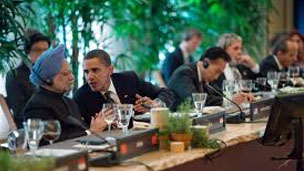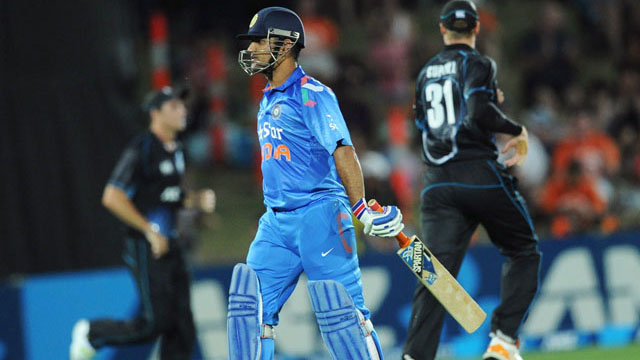The India-US climate cooperation agreed to during Prime Minister Manmohan Singh’s recent summit meeting with President Barack Obama will also include a focus on improving the energy efficiency of air-conditioning in India
The India-US climate cooperation agreed to during Prime Minister Manmohan Singh’s recent summit meeting with President Barack Obama will also include a focus on improving the energy efficiency of air-conditioning in India, which has the potential to avoid as many as 120 large power plants of 500 MW each, and to help avoid brownouts and blackouts. More importantly, it has the potential to significantly reduce the import of fuel for power plants, thereby reducing the vexing issue of the current account deficit that the finance ministry and the new Reserve Bank of India governor are trying to tackle.
The preliminary calculations based on study by the Lawrence Berkeley National Laboratory, Berkeley, show that such reduction in import of the fossil fuel can be much more than announced under the increase in import duty on gold and other electronic appliances, as urgent measures.
Air conditioners could add as much as 140 GW to peak load by 2030. The new India-US Collaboration on Smart and Efficient Air Conditioning and Space Cooling is intended to advance policies and innovation to drive mass deployment and rapid uptake of high-efficiency cooling equipment and technologies to capture significant energy savings.
The crowning achievement of the bilateral summit, among the proactive measures to tackle climate change, has been to immediately convene India-US Task Force on the dangerously potent hydrofluorocarbons (HFCs) to discuss, inter alia, multilateral approaches to phase down these gases which have global warming potential of nearly 2,000 times more than carbon dioxide and whose consumptions and emissions are growing at the rate of more than 15 percent.
Manmohan Singh, Barack Obama and Chinese President Xi Jinping, over the last few months, have stepped up their trinity leadership on the complex global challenge of the climate change on top of the ‘Yes, we can’ list. The leaders also noted that they “are committed to support the full implementation of the agreed outcomes under the United Nations Framework Convention on Climate Change (UNFCCC) with its ongoing negotiations. They strongly welcomed the efforts of the UN secretary general to mobilize political will through 2014 towards the successful adoption of a post-Kyoto protocol or an agreed outcome with legal force applicable to all parties by 2015, during a global meet that France is to host.
The India-US bilateral agreement includes cautious but definite practical steps and multilateral approaches for dealing with climate change. This includes using the expertise and the successful institutions of the Montreal Protocol to phase down the consumption and production of HFCs based on economically viable and technically feasible alternatives. There will also be provision to grant the incremental cost of the technology transfer and grace period for developing countries like India and China.
This is the key principle of the “common but differentiated responsibility” that India has advocated and successfully defended even for the Montreal Protocol, under which India has already benefited by about $300 million and a grace period of 10 years as compared to the phaseout timetable of the developed countries, to adopt and assimilate the latest efficient technologies.
Manmohan Singh and Obama also envisioned the possibility that HFCs remain within the scope of the UNFCCC and the Kyoto Protocol for accounting and reporting of emissions of these powerful green house gases. The partnership between India and the US on HFCs has topped up the cascading developments this year: in May the countries of the Arctic Council endorsed action on HFCs by the Montreal Protocol at their ministerial meeting in Sweden. Also in May the EU proposed that the UNFCCC encourage the parties of the Montreal Protocol to phase down HFCs. In June, Obama and Xi agreed to support this approach. This was followed by support for the proposal from the small island nations of the Pacific in August, from the 34 countries of the Climate and Clean Air Coalition to Reduce Short-Lived Climate Pollutants in early September, and most recently, from the leaders of the largest economies in the world, the G20.
Phase-outs of ozone depleting refrigerants under the Montreal Protocol have revolutionized the refrigeration and air-conditioning industry globally. The momentous improvements in energy efficiency for example in refrigerators and central air conditioning to the extent of 50-70 percent have already reaped major economic and environmental benefits, particularly in emerging economies of India and China. The industry is now heralding similar benefits for the alternatives to HFCs that would play an important role in catalyzing further much-needed energy efficiency gains.
The UN Environment Programme and the World Meteorological Organization and other scientists estimate that cutting HFCs and the other short-lived climate pollutants can cut the rate of global warming in half, cut Arctic warming by two-thirds and cut warming in high elevation regions of the Himalayas and Tibet by at least half.
-Rajendra Shende, IANS





